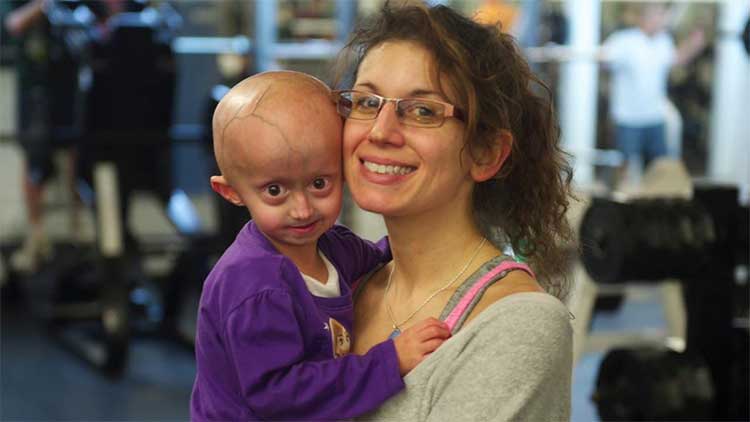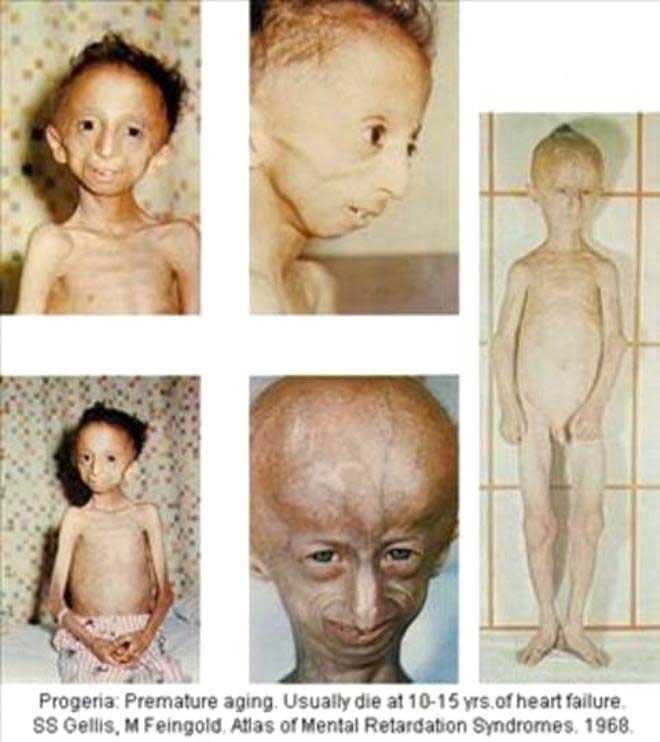The mystery of the disease makes the young yet grown up old
From the moment they turned 2, the patients had signs of aging and often left when they were just 13 years old.
In 2004, doctors discovered a 100% fatal disease for those who had it. It is an aging disease in children, also known as Progeria, old syndrome before Hutchinson-Gilford age.
3-year-old baby like an old woman 80 years old
ABC reports, the world has only discovered 144 cases of Progeria. In particular, patients who are completely unaware of their illnesses until the body begins to show signs of aging.
The youngest case diagnosed with Progeria is Zoey Penny (born in 2010, in New Jersey, USA). When he was born, Zoey had no unusual expression. She grows well with safety indicators. But by the age of 5 months, Zoey's weight did not increase, causing her parents to worry, thinking their children had rickets.

Zoey Penny is only 3 years old but her body and appearance are 80 years old.(Photo: Youtube).
On examination, the doctors found that Zoey's limbs became strangely stiff, the abdomen swelled but did not accurately detect the disease she had. When he was 3 years old, Zoey looked like a skinny old lady. Inside her body also appeared diseases of old age such as arthritis, venous obstruction, memory impairment .
China also recorded the case of two brothers Sang Zixuan (7 years old) and Sang Ziheng (6 years old) with similar illness. When they were two, their bodies began to make big changes like weak bones, wrinkled skin, and difficult speech.
To date, all cases of Progeria have died at the age of 13, few have survived until adulthood. Dr. Francis Collins, the first scientist to discover the cause of this dangerous disease, said: "Children who have been diagnosed with Progeria are very surprised. No family history, no warning, There is no sign of the stage of the disease, it all happens and there is an end. "
Did not find a way to cure Progeria
Progeria was first described in 1886 by Dr. Jonathan Hutchinson. By 1897, Dr. Hastings Gilford added relevant cases. Therefore, the name of the disease is named after these two researchers.
Progeria in Greek means 'premature aging' . Research results of Dr. Hennekam RC show that in the Netherlands, 4 million children have one case of this syndrome. As of January 2017, 144 cases in the world have only been recorded in 46 countries. However, this number is increasing every year.

The body of a patient with Progeria.(Photo: NBS Sciences).
Children with Progeria have an 8-10 times higher rate of aging than a normal person. So when I was just 10 years old, their bodies were like 70 and there were a series of elderly diseases like respiratory, cardiovascular and osteoarthritis diseases. Patients often lose at an average age of 12.6. Most do not live through adolescence, only one or two cases live over 20 years of age.
In 2003, Dr. Nicolas Levy (Marseille) and researchers of NIH (National Institutes of Health) found the cause of premature aging syndrome in children is due to the LMNA gene mutation . This gene plays a role in the production of the Lamin A protein - a protein that maintains the shape and stability of the cell nucleus.
The gene mutation loses 50 amino acids in the carboxy head of prelamin A to form progerin protein. Progerin accumulates gradually in the HGPS cell nucleus causing changes in function and morphology leading to premature aging.
Progeria syndrome begins to manifest around 18-24 months of age. At birth, patients usually weigh about 3kg, approximately 50cm high.
When you have Progeria, your hair and eyebrows grow very slowly or almost none. Thin, pale skin, especially in the head, can often see the blood vessels clearly. From age 6 onwards, the subcutaneous fat layer begins to disappear. Initially the hands, the legs then reach the chest, waist and finally the face.
Progeria's death rate is almost 100%. Currently, the medical community has not found a treatment for Progeria to be highly effective. Most measures can only reduce the effects of complications and reduce the harmful effects of aging-related diseases.
- 20-year-old boy thought 160-year-old old man
- 1 year old like stuff 80
- The mystery of young stars near the black hole
- The diseases are most likely to cause death when you are young
- Hand, foot and mouth disease in the season: Things to know
- 'Little boy' may have trouble because ... dental disease
- Horror diseases are not for the weak
- Disease of young cattle
- She only survived on milk
- An Indian woman can rotate her arms 180 degrees
- Lack of food makes young birds killed
- Detect eye cancer in young children by turning on the flash when taking photos
- America: Successful reconstruction of bladder
- Decipher the mysterious death of the famous Egyptian king
 13 causes of non-itchy rash
13 causes of non-itchy rash How the mouse with human ears changed the world?
How the mouse with human ears changed the world? The truth about 'fried rice syndrome!
The truth about 'fried rice syndrome! What is dental implant?
What is dental implant?